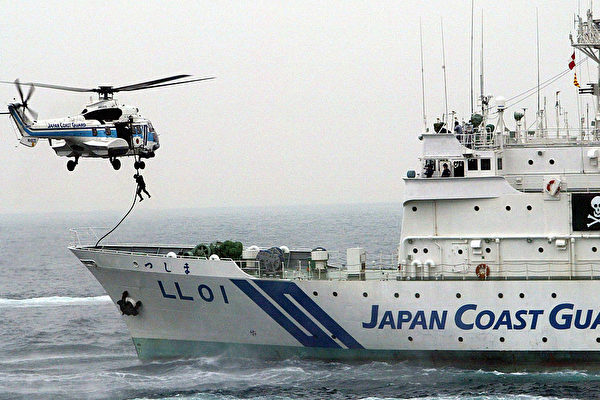In response to the increasing threat posed by the Chinese Communist Party in the South China Sea, the Japan Coast Guard is considering building its largest multi-purpose patrol vessel to date, with research funding allocated last year.
According to media reports, the vessel will serve as a “sea base,” capable of carrying dozens of high-performance rubber boats and several helicopters. It can accommodate up to 1,500 people, including residents, and may also provide space for transporting containers. Additionally, the vessel will have the capability to command other patrol boats and ships in the vicinity.
The planned multi-purpose patrol vessel is expected to have a total tonnage of approximately 30,000 tons and a length of around 200 meters, far exceeding the Coast Guard’s current largest patrol vessel with a total tonnage of 6,500 tons.
The Japan Coast Guard allocated tens of millions of yen from last year’s budget to commission a private company to conduct preliminary design research on the vessel’s basic structure, and received the research report in March of this year.
In the 2025 budget application, the Coast Guard will include related costs with the goal of starting operation after 2029. Plans are also in place to build two more vessels of this kind in the future, which would be three to four times larger than the current largest patrol vessel in the Coast Guard’s fleet.
However, internally within the Coast Guard, there are some cautious opinions regarding the vessel’s potential use, especially given the ongoing shortage of manpower. Further discussions on specific details will be held in the future.
Should the vessel be completed, it will be considered for tasks such as expelling Chinese vessels repeatedly intruding near the Diaoyu Islands and preventing them from landing, as well as for evacuating residents and responding to natural disasters in places like Taiwan in emergency situations.
In 2011, the Japanese government established the “Control Guidelines,” a procedure for cooperation between the Self-Defense Forces and the Coast Guard during emergencies. The Coast Guard’s responsibilities during emergencies, including evacuating residents and maritime search and rescue, are defined in the “Control Guidelines.”

